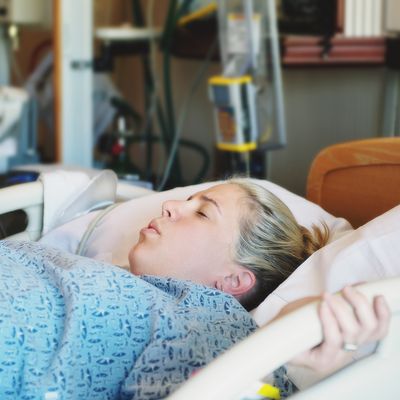
Nearly one-quarter of women who deliver a baby in the U.S. have their labor induced. But even though the procedure is so common, the methods currently used aren’t necessarily ideal, as they typically cause painful labor to last even longer. Luckily, researchers have finally discovered a way to induce labor that reduces the amount of time it takes, potentially saving women 2.4 million hours of labor each year.
Right now, there are generally two options for induction, which is often medically necessary, particularly in instances of preeclampsia or health risks to the mom or baby. In one option, the mother is given a pill, vaginal insert, or vaginal gel that releases synthetic hormones to get the cervix ready for induction. In the other, a mechanical form — e.g., a balloon catheter — is placed in the cervix, which releases naturally occurring hormones.
Yet both options have similar rates of C-sections in the end — and both take a while to kick in, according to Dr. Lisa D. Levine of the Perelman School of Medicine at the University of Pennsylvania. “Since women usually are in labor longer when they have their labor induced, I wanted to see if combining more than one method that’s currently used could actually lead to a faster delivery,” Dr. Levine told the Cut.
Enlisting roughly 500 women in the study, which is published in the journal Obstetrics & Gynecology, Dr. Levine and her colleagues found that using a balloon catheter known as the Foley catheter in combination with a prostaglandin drug called misoprostol actually reduces a woman’s time spent in labor by four hours. Women who underwent the combination method generally gave birth within 13 hours, as opposed to more than 17 hours for those who used only one of the methods.
There’s an obvious benefit to faster labor for the mothers: less time spent in pain. “Also, it has benefits to the health-care system in general because the faster women deliver, the quicker they can get out of the hospital,” Levine noted.
The study was only conducted at one institution, however, so the doctor cautioned that the combination method should be examined on a broader scale before it becomes more widely adopted. But at the moment, her hospital is using it on women who are interested — and she even underwent the method herself when she needed her own labor induced in September. “I’m a firm believer in it, and so I definitely came in saying I want the combination method,” Levine told the Cut.





